Discovering the local tea scene is a must for any traveler in Vietnam! SIXT.VN helps you navigate the world of Vietnamese teas, showcasing popular varieties and where to find them. From the aromatic green teas to the unique herbal infusions, we provide insights and services to enhance your tea journey in Vietnam. Let us guide you through the flavors of lotus tea, jasmine tea, and more with our expert advice and convenient travel solutions.
1. What Makes Vietnamese Tea Unique?
Vietnamese tea possesses a unique character shaped by the country’s climate, soil, and traditional cultivation practices. The diverse geography, ranging from the highlands of Sapa to the fertile plains of the Mekong Delta, allows for the growth of various tea types, each with its distinct flavor profile. According to a report by the Vietnam Tea Association, the country’s tea industry benefits from a combination of favorable natural conditions and centuries of tea-making expertise. This blend results in teas that reflect Vietnam’s rich cultural heritage and natural abundance.
 Green tea fields in Vietnam, showcasing the lush landscape where tea is grown
Green tea fields in Vietnam, showcasing the lush landscape where tea is grown
1.1 How Does Vietnam’s Climate Affect Tea Production?
Vietnam’s tropical monsoon climate plays a significant role in tea production. The high humidity and abundant rainfall contribute to the lush growth of tea plants, resulting in leaves that are rich in flavor and aroma. The distinct seasons also allow for multiple harvests throughout the year, ensuring a consistent supply of fresh tea. Research from the Vietnamese Academy of Agricultural Sciences highlights that the climate in regions like Thai Nguyen and Lam Dong provides ideal conditions for tea cultivation, leading to high-quality yields.
1.2 What Traditional Practices are Used in Vietnamese Tea Cultivation?
Traditional practices in Vietnamese tea cultivation involve a deep understanding of the land and a commitment to sustainable methods. Many tea farmers still rely on manual labor for harvesting and processing, preserving the integrity of the tea leaves. These methods, passed down through generations, ensure that each step of the tea-making process is carefully executed. A study by the Ministry of Agriculture and Rural Development notes that traditional techniques, combined with modern innovations, are crucial for maintaining the quality and authenticity of Vietnamese tea.
2. What Are The Most Popular Types Of Tea In Vietnam?
Vietnam offers a diverse range of teas, each with unique characteristics and cultural significance. The most popular types include green tea, lotus tea, jasmine tea, and oolong tea. These teas are not only enjoyed for their distinct flavors but also for their health benefits and cultural importance. According to the Vietnam Tea Association, these varieties represent the core of the country’s tea culture and are widely consumed throughout Vietnam.
 Steaming cups of lotus tea, showcasing a popular type of tea in Vietnam
Steaming cups of lotus tea, showcasing a popular type of tea in Vietnam
2.1 Why Is Green Tea So Widely Consumed In Vietnam?
Green tea is a staple in Vietnamese households and tea shops, prized for its refreshing taste and health benefits. It is produced by lightly processing the tea leaves to prevent oxidation, preserving its natural color and flavor. The resulting tea is rich in antioxidants and offers a subtle, grassy taste that is both invigorating and soothing. Research from the National Institute of Nutrition indicates that regular consumption of green tea can contribute to improved cardiovascular health and overall well-being.
2.2 What Makes Lotus Tea A Special Vietnamese Delicacy?
Lotus tea is a unique Vietnamese delicacy, crafted by infusing green tea leaves with the delicate fragrance of lotus flowers. This process requires great skill and patience, as the tea leaves must be carefully layered with the lotus petals and left to absorb the floral aroma. The resulting tea offers a harmonious blend of green tea’s subtle bitterness and lotus’s sweet, floral notes. According to culinary experts at the Hanoi Culinary Association, lotus tea is a symbol of Vietnamese elegance and is often served during special occasions.
2.3 How Is Jasmine Tea Traditionally Prepared In Vietnam?
Jasmine tea is another popular flavored tea in Vietnam, created by scenting green tea leaves with fresh jasmine blossoms. The tea leaves are typically harvested in the spring, while the jasmine flowers are picked at night when their fragrance is most intense. The tea and flowers are then layered together, allowing the tea to absorb the jasmine’s sweet, floral aroma. This process is repeated several times to achieve the desired level of scent. A study by the Vietnamese Academy of Agricultural Sciences notes that the quality of jasmine tea depends on the expertise of the tea maker and the freshness of the jasmine flowers.
2.4 What Are The Characteristics Of Vietnamese Oolong Tea?
Oolong tea in Vietnam is primarily grown in the highlands of Lam Dong province and is known for its complex flavor profile. Vietnamese oolong teas range from lightly oxidized varieties with floral notes to more heavily oxidized types with roasted flavors. The tea leaves are carefully processed to achieve the desired level of oxidation, resulting in a tea that offers a balance of sweetness, body, and aroma. Tea experts at the Vietnam Tea Association highlight that Vietnamese oolong teas are gaining international recognition for their quality and unique characteristics.
3. Where Are The Best Regions In Vietnam To Experience Tea Culture?
To truly experience Vietnam’s tea culture, visiting key tea-growing regions such as Thai Nguyen, Moc Chau, and Lam Dong is essential. These regions offer lush tea plantations, traditional tea houses, and opportunities to learn about the tea-making process from local farmers. According to the Vietnam National Administration of Tourism, these areas provide an immersive experience that showcases the country’s rich tea heritage.
 Tea pickers in Thai Nguyen, a famous tea-growing region in Vietnam
Tea pickers in Thai Nguyen, a famous tea-growing region in Vietnam
3.1 Why Is Thai Nguyen Known As The “Tea Capital” Of Vietnam?
Thai Nguyen is often referred to as the “tea capital” of Vietnam due to its extensive tea plantations and long history of tea production. The region’s fertile soil and favorable climate create ideal conditions for growing high-quality tea. Visitors to Thai Nguyen can explore tea farms, participate in tea ceremonies, and sample a variety of locally produced teas. A report by the Thai Nguyen Department of Agriculture and Rural Development emphasizes the region’s commitment to preserving its tea heritage and promoting sustainable tea farming practices.
3.2 What Unique Experiences Does Moc Chau Offer To Tea Enthusiasts?
Moc Chau is another prominent tea-growing region in Vietnam, known for its stunning landscapes and unique tea varieties. The region’s cooler climate and mountainous terrain contribute to the distinct flavor of Moc Chau tea. Visitors can enjoy scenic tea tours, stay in traditional tea houses, and learn about the local ethnic minority cultures that are deeply intertwined with tea cultivation. According to the Son La Department of Culture, Sports, and Tourism, Moc Chau offers a blend of natural beauty and cultural richness that appeals to tea enthusiasts.
3.3 How Does Lam Dong’s Highland Climate Benefit Tea Production?
Lam Dong, located in the Central Highlands of Vietnam, benefits from a cool, highland climate that is perfect for growing tea. The region is known for producing high-quality oolong tea, as well as black and green teas. Visitors to Lam Dong can explore tea plantations, visit tea factories, and enjoy tea tasting sessions with experienced tea makers. Research from the Lam Dong Department of Agriculture and Rural Development highlights the region’s focus on producing organic and sustainable teas that meet international standards.
4. How Can You Participate In A Traditional Vietnamese Tea Ceremony?
Participating in a traditional Vietnamese tea ceremony, or “trà đạo,” is a meaningful way to experience the country’s cultural heritage. These ceremonies are often conducted in homes or tea houses and involve a series of ritualized steps that emphasize respect, mindfulness, and appreciation for tea. According to cultural experts at the Vietnam National Museum of History, the tea ceremony is an integral part of Vietnamese social etiquette and spiritual practice.
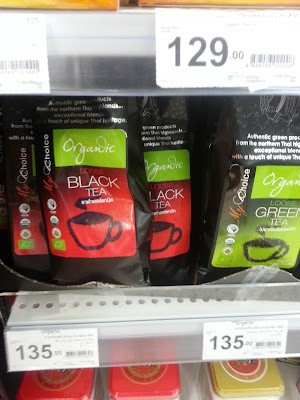 A traditional Vietnamese tea ceremony, showcasing the ritual and respect associated with tea
A traditional Vietnamese tea ceremony, showcasing the ritual and respect associated with tea
4.1 What Are The Key Elements Of A Vietnamese Tea Ceremony?
The key elements of a Vietnamese tea ceremony include the preparation of the tea, the serving of the tea, and the mindful consumption of the tea. The tea is typically brewed in a small teapot and served in delicate cups. The host will offer the tea to the guests, who are expected to receive it with both hands as a sign of respect. The tea is then sipped slowly, allowing the drinker to savor the aroma and flavor. According to etiquette guides from the Vietnam Cultural Heritage Association, these elements are essential for creating a harmonious and respectful tea experience.
4.2 How Does The Tea-Making Process Contribute To The Ceremony’s Significance?
The tea-making process is an integral part of the Vietnamese tea ceremony, as it involves a series of deliberate and mindful steps. The water must be heated to the correct temperature, the tea leaves must be measured precisely, and the brewing time must be carefully controlled. These steps require focus and attention, creating a sense of mindfulness that is central to the ceremony’s significance. Research from the Institute of Vietnamese Studies suggests that the tea-making process is a form of meditation that promotes inner peace and harmony.
4.3 What Role Does Etiquette Play In A Traditional Tea Ceremony?
Etiquette plays a crucial role in a traditional Vietnamese tea ceremony, ensuring that the event is conducted with respect and harmony. Guests are expected to dress modestly, arrive on time, and follow the host’s lead. They should also avoid talking excessively or engaging in disruptive behavior. The proper handling of the tea cups and the way the tea is sipped are also important aspects of etiquette. According to cultural anthropologists at the Vietnam Academy of Social Sciences, adhering to these etiquette guidelines demonstrates respect for the host, the tea, and the cultural traditions associated with the ceremony.
5. Where Can You Find Authentic Vietnamese Tea In Hanoi?
Hanoi, the capital of Vietnam, offers numerous opportunities to discover and purchase authentic Vietnamese tea. From traditional tea shops in the Old Quarter to modern tea houses and markets, the city is a treasure trove for tea enthusiasts. According to the Hanoi Department of Tourism, exploring these venues is a must for anyone seeking to immerse themselves in Vietnamese tea culture.
 A traditional tea shop in Hanoi's Old Quarter, showcasing the charm of local tea vendors
A traditional tea shop in Hanoi's Old Quarter, showcasing the charm of local tea vendors
5.1 What Are The Best Tea Shops In Hanoi’s Old Quarter?
Hanoi’s Old Quarter is home to many traditional tea shops that have been selling tea for generations. These shops offer a wide variety of Vietnamese teas, including green tea, lotus tea, jasmine tea, and oolong tea. Some of the most popular tea shops in the Old Quarter include Mai Oanh Tea, Tan Tra, and Huong Mai Tea. These shops are known for their high-quality tea and knowledgeable staff who can provide insights into the different varieties and brewing methods. Reviews from local tea enthusiasts consistently praise these shops for their authenticity and commitment to preserving traditional tea culture.
5.2 How Do Modern Tea Houses In Hanoi Blend Tradition With Innovation?
In addition to traditional tea shops, Hanoi also boasts a number of modern tea houses that blend traditional practices with innovative approaches. These tea houses often offer a more contemporary setting and a wider range of tea-related products and services. Some popular modern tea houses in Hanoi include Oriberry Coffee & Tea, TWG Tea Salon & Boutique, and An’s Tea Room. These establishments offer not only a selection of high-quality teas but also tea-infused desserts, tea-making workshops, and other unique experiences. According to trend reports from the Hanoi Hospitality Association, these modern tea houses are attracting a younger generation of tea drinkers who appreciate the blend of tradition and innovation.
5.3 What Local Markets Offer A Wide Selection Of Vietnamese Teas?
Hanoi’s local markets are another great place to find a wide selection of Vietnamese teas at affordable prices. Markets like Dong Xuan Market and Hom Market offer numerous stalls selling tea, along with other local products and handicrafts. While the quality of tea at these markets can vary, it is possible to find some hidden gems if you are willing to explore and negotiate. According to local shopping guides, visiting these markets can provide an authentic glimpse into Hanoi’s vibrant tea culture and daily life.
6. What Are Some Unique Tea-Based Beverages To Try In Vietnam?
Beyond traditional tea preparations, Vietnam offers a variety of unique tea-based beverages that are worth exploring. These drinks combine tea with local ingredients like fruits, herbs, and spices to create refreshing and flavorful concoctions. Culinary experts at the Vietnam Culinary Arts Association recommend trying these beverages to experience the full spectrum of Vietnamese tea culture.
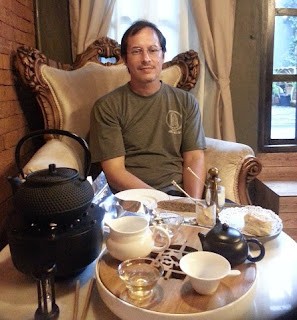 A refreshing glass of iced jasmine tea with lemon, showcasing a unique Vietnamese tea-based beverage
A refreshing glass of iced jasmine tea with lemon, showcasing a unique Vietnamese tea-based beverage
6.1 How Is “Trà Chanh” A Popular Street Food Staple In Vietnam?
“Trà chanh,” or lemon tea, is a ubiquitous street food staple in Vietnam, especially popular among young people. This simple yet refreshing drink is made by combining green tea with fresh lemon juice and sugar. It is typically served over ice and enjoyed as a cooling beverage on hot days. According to street food bloggers in Hanoi, “trà chanh” is not just a drink but a social experience, often enjoyed while gathering with friends on the sidewalks of the city.
6.2 What Makes “Trà Atiso” A Healthy And Refreshing Choice?
“Trà atiso,” or artichoke tea, is a healthy and refreshing choice that is widely consumed in Vietnam. This tea is made from the flower and leaves of the artichoke plant and is known for its detoxifying and digestive properties. It has a slightly bitter taste that is often balanced with a touch of honey or sugar. Research from the Vietnamese Institute of Traditional Medicine suggests that “trà atiso” can help improve liver function and promote overall well-being.
6.3 How Does “Trà Gừng” Offer Warmth And Comfort In Vietnamese Culture?
“Trà gừng,” or ginger tea, is a traditional Vietnamese beverage that offers warmth and comfort, especially during the colder months. This tea is made by steeping fresh ginger slices in hot water and is often sweetened with honey or sugar. It is known for its anti-inflammatory and immune-boosting properties and is often used as a remedy for colds and flu. According to traditional Vietnamese medicine practitioners, “trà gừng” can help improve circulation and relieve digestive discomfort.
7. What Health Benefits Are Associated With Drinking Vietnamese Tea?
Drinking Vietnamese tea is associated with numerous health benefits, thanks to the presence of antioxidants, vitamins, and minerals in the tea leaves. Regular consumption of tea can contribute to improved cardiovascular health, enhanced cognitive function, and reduced risk of chronic diseases. Research from the Vietnam National Institute of Nutrition highlights the potential of Vietnamese tea as a natural health-promoting beverage.
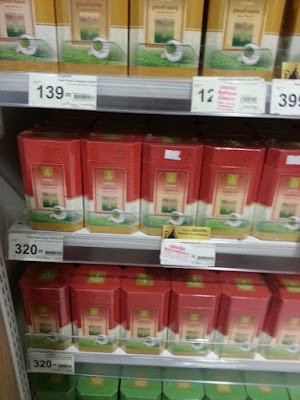 A cup of Vietnamese green tea, emphasizing the health benefits associated with its consumption
A cup of Vietnamese green tea, emphasizing the health benefits associated with its consumption
7.1 How Do Antioxidants In Green Tea Benefit Overall Health?
The antioxidants in green tea, particularly catechins, are known for their ability to neutralize free radicals and protect cells from damage. These antioxidants can help reduce the risk of chronic diseases such as heart disease, cancer, and Alzheimer’s disease. Studies published in the Journal of the American College of Nutrition have shown that regular consumption of green tea can significantly increase antioxidant levels in the body, leading to improved overall health.
7.2 What Cognitive Benefits Can Be Derived From Drinking Tea?
Drinking tea has been linked to improved cognitive function, including enhanced memory, focus, and alertness. The caffeine in tea can provide a mild stimulant effect, while other compounds like L-theanine can promote relaxation and reduce stress. Research from the National University of Singapore indicates that regular tea consumption can help protect against cognitive decline and improve brain health in the long term.
7.3 How Can Tea Consumption Contribute To Cardiovascular Health?
Tea consumption has been shown to contribute to cardiovascular health by improving blood vessel function, reducing cholesterol levels, and lowering blood pressure. The flavonoids in tea can help prevent the oxidation of LDL cholesterol, a major risk factor for heart disease. A meta-analysis published in the American Journal of Clinical Nutrition found that drinking tea regularly is associated with a reduced risk of stroke and heart attack.
8. What Are Some Common Misconceptions About Vietnamese Tea?
Despite its rich history and cultural significance, Vietnamese tea is often subject to misconceptions, particularly among international consumers. These misconceptions can range from beliefs about its quality and flavor to its production methods and health benefits. Addressing these misconceptions is essential for promoting a more accurate and nuanced understanding of Vietnamese tea.
 A tea plantation in Vietnam, dispelling misconceptions about the quality and production of Vietnamese tea
A tea plantation in Vietnam, dispelling misconceptions about the quality and production of Vietnamese tea
8.1 Is It True That All Vietnamese Tea Is Of Low Quality?
One common misconception is that all Vietnamese tea is of low quality. While it is true that some mass-produced teas may not meet the standards of specialty teas, Vietnam is also home to many skilled tea farmers and producers who are committed to producing high-quality, artisanal teas. These teas are carefully cultivated, processed, and graded to ensure exceptional flavor and aroma. According to tea experts at the International Tea Masters Association, Vietnamese specialty teas are gaining recognition for their unique characteristics and quality.
8.2 Does Vietnamese Tea Always Have A Bitter Taste?
Another misconception is that Vietnamese tea always has a bitter taste. While some green teas may have a slightly bitter note, many Vietnamese teas are known for their smooth, sweet, and floral flavors. The taste of tea depends on various factors, including the type of tea, the processing method, and the brewing technique. Properly brewed Vietnamese teas can offer a complex and nuanced flavor profile that is far from being simply bitter.
8.3 Are Flavored Teas Like Lotus And Jasmine Artificially Scented?
Some people believe that flavored teas like lotus and jasmine are artificially scented. However, traditional Vietnamese lotus and jasmine teas are made by naturally scenting the tea leaves with fresh flowers. This process involves layering the tea leaves with the flowers and allowing them to infuse the tea with their aroma. While some commercially produced teas may use artificial flavorings, authentic Vietnamese flavored teas are made using traditional, natural methods.
9. How Can SIXT.VN Enhance Your Tea Tour Experience In Vietnam?
SIXT.VN offers a range of services that can enhance your tea tour experience in Vietnam, from convenient airport transfers to comfortable hotel bookings and expertly guided tours. Our goal is to make your journey as seamless and enjoyable as possible, allowing you to focus on discovering the rich tea culture of Vietnam. With SIXT.VN, you can explore the tea regions, participate in tea ceremonies, and sample a variety of local teas with ease and comfort.
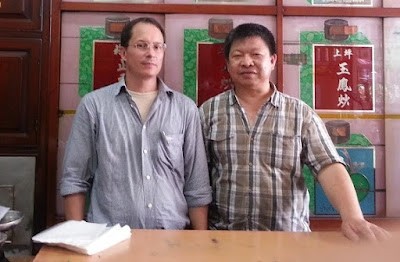 The SIXT.VN logo, highlighting the services offered for a seamless tea tour experience in Vietnam
The SIXT.VN logo, highlighting the services offered for a seamless tea tour experience in Vietnam
9.1 How Can SIXT.VN Provide Convenient Airport Transfers?
SIXT.VN provides convenient and reliable airport transfer services to ensure that your journey to and from the airport is stress-free. Our professional drivers will meet you at the airport and transport you directly to your hotel or other destination in comfort and safety. With SIXT.VN, you can avoid the hassle of navigating public transportation or searching for taxis, allowing you to start your tea tour experience on a positive note.
9.2 What Hotel Booking Options Does SIXT.VN Offer In Tea-Growing Regions?
SIXT.VN offers a wide range of hotel booking options in Vietnam’s tea-growing regions, catering to different budgets and preferences. Whether you are looking for a luxurious resort, a cozy guesthouse, or a budget-friendly hotel, we can help you find the perfect accommodation for your tea tour. Our user-friendly booking platform allows you to compare prices, read reviews, and book your hotel with ease.
9.3 How Can SIXT.VN Organize Guided Tours To Tea Plantations And Tea Houses?
SIXT.VN can organize expertly guided tours to tea plantations and tea houses, providing you with an immersive and educational experience. Our knowledgeable guides will take you to the best tea-growing areas, introduce you to local tea farmers, and explain the tea-making process from start to finish. You will also have the opportunity to participate in tea ceremonies, sample a variety of local teas, and learn about the cultural significance of tea in Vietnam.
10. What Travel Tips Should You Keep In Mind While Exploring Vietnamese Tea Culture?
When exploring Vietnamese tea culture, it is important to keep in mind certain travel tips to ensure a smooth and enjoyable experience. These tips include respecting local customs, being mindful of tea etiquette, and being open to trying new and different teas. According to travel experts at the Vietnam Tourism Advisory Board, following these tips will help you make the most of your tea tour in Vietnam.
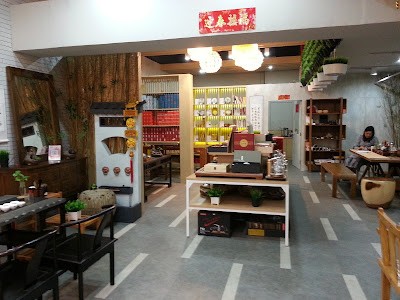 A traveler enjoying a cup of tea at a local tea house, embodying the spirit of exploration and respect for Vietnamese tea culture
A traveler enjoying a cup of tea at a local tea house, embodying the spirit of exploration and respect for Vietnamese tea culture
10.1 How Can You Show Respect For Local Customs During A Tea Ceremony?
Showing respect for local customs during a tea ceremony is essential for creating a positive and harmonious experience. This includes dressing modestly, arriving on time, and following the host’s lead. It is also important to receive the tea with both hands, avoid talking excessively, and sip the tea slowly. By adhering to these customs, you can demonstrate your appreciation for Vietnamese culture and build rapport with the locals.
10.2 What Are Some Important Aspects Of Tea Etiquette To Be Aware Of?
Being aware of tea etiquette is crucial for participating in Vietnamese tea culture with grace and respect. This includes avoiding touching the tea cups with your bare hands, not pouring tea for yourself, and not leaving any tea in your cup. It is also important to compliment the tea and express your gratitude to the host. By following these etiquette guidelines, you can show your appreciation for the art of tea and avoid causing offense.
10.3 How Can Being Open To Trying New Teas Enhance Your Experience?
Being open to trying new and different teas can significantly enhance your experience of Vietnamese tea culture. Vietnam offers a diverse range of teas, each with its unique flavor profile and characteristics. By stepping outside your comfort zone and trying teas that you have never tasted before, you can expand your palate, discover new favorites, and gain a deeper appreciation for the art of tea.
Ready to embark on a tea-filled adventure in Vietnam? Let SIXT.VN take care of all your travel needs, from airport transfers and hotel bookings to guided tours and expert advice. Contact us today or visit our website at SIXT.VN to start planning your unforgettable tea tour experience! Address: 260 Cau Giay, Hanoi, Vietnam. Hotline/Whatsapp: +84 986 244 358.
FAQ: Popular Vietnamese Teas
1. What is the most popular tea in Vietnam?
Green tea is the most popular tea in Vietnam, widely consumed for its refreshing taste and health benefits.
2. What is lotus tea and why is it special?
Lotus tea is a Vietnamese delicacy where green tea leaves are infused with lotus flowers, creating a sweet and floral aroma. It’s considered a symbol of elegance.
3. How is jasmine tea made in Vietnam?
Jasmine tea is made by scenting green tea leaves with fresh jasmine blossoms, a process repeated several times to achieve the desired aroma.
4. What are the characteristics of Vietnamese oolong tea?
Vietnamese oolong tea, grown in the highlands, offers complex flavors from light floral notes to roasted flavors, depending on the oxidation level.
5. Which regions in Vietnam are best for experiencing tea culture?
Thai Nguyen, Moc Chau, and Lam Dong are the best regions, offering tea plantations, traditional tea houses, and insights into tea-making.
6. What is a traditional Vietnamese tea ceremony called?
A traditional Vietnamese tea ceremony is called “trà đạo,” emphasizing respect, mindfulness, and appreciation for tea.
7. Where can I find authentic Vietnamese tea in Hanoi?
You can find authentic Vietnamese tea in Hanoi’s Old Quarter tea shops, modern tea houses, and local markets like Dong Xuan Market.
8. What are some unique tea-based beverages to try in Vietnam?
Try “trà chanh” (lemon tea), “trà atiso” (artichoke tea), and “trà gừng” (ginger tea) for unique flavors.
9. What are the health benefits of drinking Vietnamese tea?
Vietnamese tea offers antioxidants, improves cardiovascular health, enhances cognitive function, and reduces chronic disease risks.
10. What is a common misconception about Vietnamese tea?
A common misconception is that all Vietnamese tea is low quality, which is untrue as Vietnam produces many high-quality, artisanal teas.



